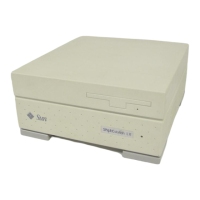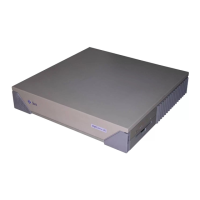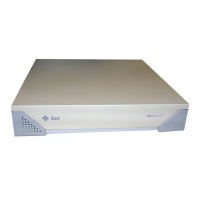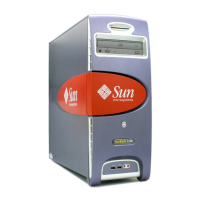Chapter 4 Troubleshooting Procedures 4-7
a. If the disk drive responds and a message is displayed, the system SCSI
controller has successfully probed the devices.
This indicates that the system board is working correctly.
b. If a disk doesn’t respond:
i. Verify that the SCSI target ID is set correctly. Make sure that every SCSI
disk and other SCSI device on the SCSI bus has a different SCSI target ID.
ii. Verify that all SCSI cables and the SCSI terminator are connected securely.
iii. Check the SCSI cables to make sure there are no bent pins.
iv. If you have not found the problem, after checking the previous causes,
replace the unresponsive drive.
v. If the problem still occurs after replacing the drive, replace the system
board.
vi. If replacing the disk drive and the system board does not correct the
problem, replace the internal disk drive cable assembly.
4.4 Determining Faulty DSIMM Locations
The Sundiag System Exerciser, SunDiagnostic Executive, and POST diagnostics can
report memory errors encountered during program execution. For general
information about diagnostics see Chapter 2, “Troubleshooting Overview.” Memory
error messages on the video monitor usually indicate a physical memory address
where the error was detected.
Depending on the diagnostic program you are running, a DSIMM location number
(“U” number) or a memory address may be displayed. If the error message displays
the location number (see
FIGURE 4-2 for DSIMM location numbers), follow the
instructions in Section 11.3.2 “Removing a DSIMM” on page 11-13 for removing the
defective DSIMM at the numbered location. To replace the DSIMM, follow the
directions in Section 11.3.3 “Replacing a DSIMM” on page 11-15.
If the error message displays a physical memory address, consult
TABLE 4-4 or
TABLE 4-5—depending on your DSIMMs’ capacity—to see which memory bank
contains the physical address.
Then, look up the last digit of the address in
TABLE 4-6 to find out which of the two
DSIMMs in that bank caused the memory error.

